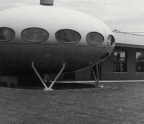
My grandfather had always been called Joseph Szedziewski—or so I thought. An immigrant who arrived in the US in 1912, Joseph lived, worked, and worshipped in Milwaukee’s Polish neighborhoods for over four decades. To his American-born descendants, he symbolized pride in Polish culture. Although we had long been Americanized, we celebrated our Polish heritage at gatherings in the living room and around the dining room table of my grandparents. Some of Joseph’s children continued to make their homes in the south side Milwaukee neighborhood where he had lived, and a few were even fluent in Polish.

In 1990, nearly thirty-five years after my grandfather’s death, my extended family received a surprise in the form of a letter from the Soviet Union from his last surviving brother, Peter Shedko. He wrote, “For a long time I had no news of my brother…. I am an old man and want to restore family ties. I am seeking the addresses of my brother’s children.”1 The upheavals in Eastern Europe between 1989 and 1991 had brought a new openness to the Soviet Union and allowed Peter to get in touch with his American relatives for the first time in more than a half century. One of my aunts wrote back to him in what she assumed was his native tongue—Polish. After a long delay, Peter’s family replied, asking her to write again in either Russian or English. Peter’s first letter had been written in English, but we later learned that he wrote the original in Russian and took it to a translator. Peter and his family did not know anyone who could read or write Polish.
The reaction in Milwaukee was one of astonishment. How could my grandfather, the patriarch of a proud Polish family, have a sibling who didn’t know Polish? Why was his brother’s surname Shedko and not Szedziewski? I soon started corresponding with Peter and his family, which led me down an unexpected path of inquiry about my Slavic kin and the meaning of ethnicity.
My grandfather, Joseph M. Szedziewski, and three of his relations—Joseph A., Boleslaus, and Charles Szedziewski, as they became known in Milwaukee—were among the more than one million Poles who moved to the United States between 1904 and 1913.2 They were four ordinary men who matched the profile of the typical Slavic immigrant in the early 1900s—young, male, single, and eager to make money to send back home. For every three Polish immigrants who remained in the US during this era, one returned to Europe—and this was also true of the four Szedziewski men.3 Their lives were shaped by ordinary circumstances—jobs, housing, family, friends, and feelings about both their old and new countries—as well as large geopolitical events. Each of the men became part of Milwaukee’s Polish community, but that identity meant something different to each man. By looking closely at their lives, we can better understand the mutability of ethnic identity among Slavs who immigrated to Milwaukee in the early years of the twentieth century.
More than seventy thousand Poles lived in Milwaukee by 1910, although some historians suggest that number might be an undercount. The Polish state had been extinguished in 1795 and would not be reestablished until after World War I. Therefore, Poles in Europe in the early 1900s typically lived in the Austrian, German, or Russian empires. Prior to 1900, nearly 80 percent of Wisconsin Poles had come from the German empire. This was twice as high as in other states with large Polish populations. In the early twentieth century, however, trends started changing. By 1913, two out of three Poles coming to the US were from Russia, compared to only one out of fifty coming from Germany.


